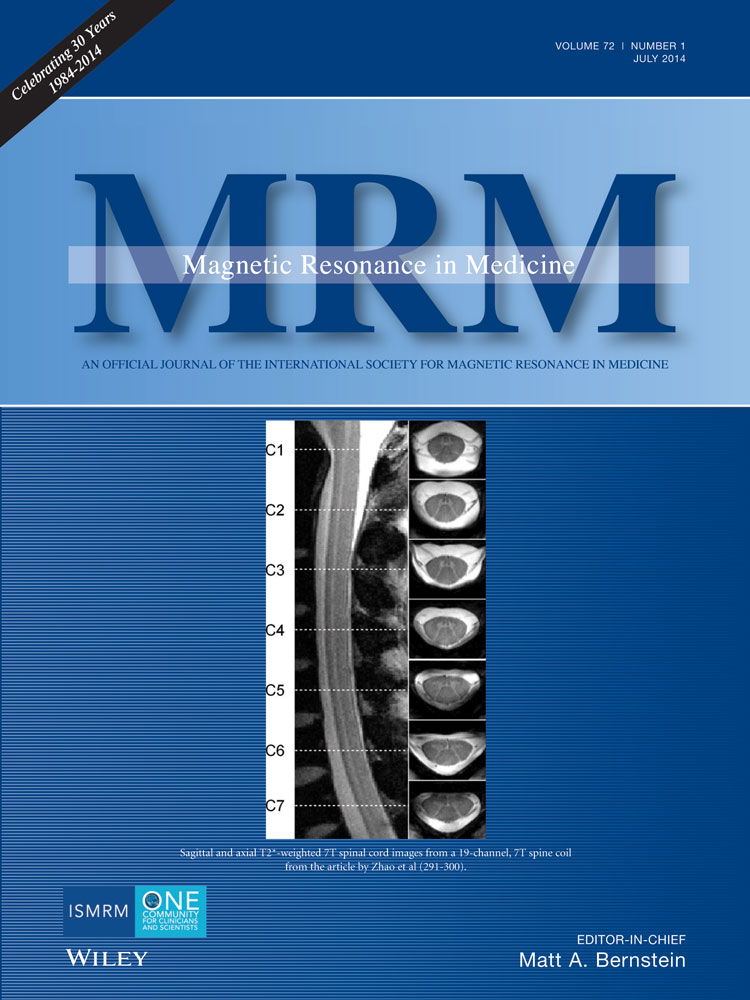Enhancement of respiratory navigator-gated three-dimensional spoiled gradient-recalled echo sequence with variable flip angle scheme
Abstract
Purpose
To develop and demonstrate the feasibility of a new technique for respiratory-gated, fat-suppressed, three-dimensional spoiled gradient-recalled echo (3D-SPGR) with navigator gating for more accurate and robust motion detection.
Methods
A navigator-gated 3D-SPGR technique was modified to include a wait period immediately prior to the navigator sequence for magnetization recovery. Furthermore, a variable flip angle scheme was realized by a combination of ramp-up, ramp-down, and attenuation strategies for optimizing point spread functions. Phantom and human experiments were conducted with our technique on 1.5T scanners.
Results
Using the method, T1-weighted 3D images with improved signal homogeneity were acquired with a maximum flip angle of 30° in phantom and human tests. Also, compared with the conventional navigator-gated 3D-SPGR, accurate respiratory motion detection of free-breathing subjects was provided, leading to reduced motion artifacts.
Conclusion
The combination of wait insertion and the variable flip angle method improved both motion detection accuracy and image homogeneity in a navigator-gated 3D-SPGR study. Magn Reson Med 72:172–177, 2014. © 2013 Wiley Periodicals, Inc.




